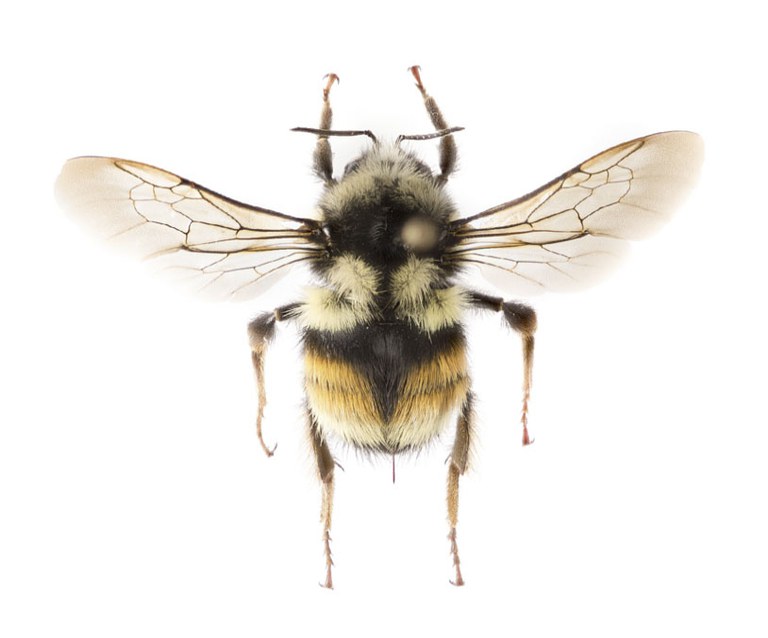Posted: January 22, 2020
Bumble bees are some of our most abundant and recognizable pollinators, essential for the pollination of many native flowering plant species. As such, the diversity of bumble bees has a long history of study by both professionals and amateurs. Because of such extensive study, it is felt that new species of bumble bees are unlikely to be found. Outstanding controversies remain, however, in what comprises a given bumble bee species.
The approximately 260 bumble bee species worldwide do not differ much in their features but exhibit incredible diversity in their coloration, both within and among species. This color diversity has created problems for species designation. A major factor confounding this is that bumble bee species within a community tend to mimic one another's color patterns, as this sends an enhanced warning signal to predators. As a result, each ecoregion tends to have a certain color pattern shared by the bumble bees that occur there. Here in the United States; eastern bumble bees are usually yellow up front and black in the tail, while Rocky Mountain bumble bees tend to have red in their middle abdomen and Pacific coast bees have darker coloration.
A study just published in Systematic Entomology by Penn State Center for Pollinator Research members of the Hines Lab, and their collaborators, examined species status in the most common western North American bumble bee species, Bombus bifarius, using genomic approaches. The study found that this abundant taxon is not one species, but two! One species - which retains the name Bombus bifarius - exhibits the Rocky mountain color pattern and is confined to the Colorado Plateau, while the other more western species - now called Bombus vancouverensis - exhibits a gradation of color from the Pacific coastal pattern to the Rocky Mountain pattern as it crosses these regions. The two species meet and co-occur, with no sign of recent interbreeding, in the mountains of eastern Utah, where both have the same coloration. The continuum of coloration between these two species with no other recognized physical characters to distinguish them is what led them to once be considered as one.
This study highlights how even some of our most common species can yield surprises in their species status. Species like this are called "cryptic" species, as lack of physical distinction between them leads them only to be revealed through molecular study. The study also shows that coloration, although an easy trait to recognize species in the field, is under strong natural selection and can lead us astray for species delimitation. The results of this study call for a need to reassess the conservation status of these newly defined species.
By Heather Hines



